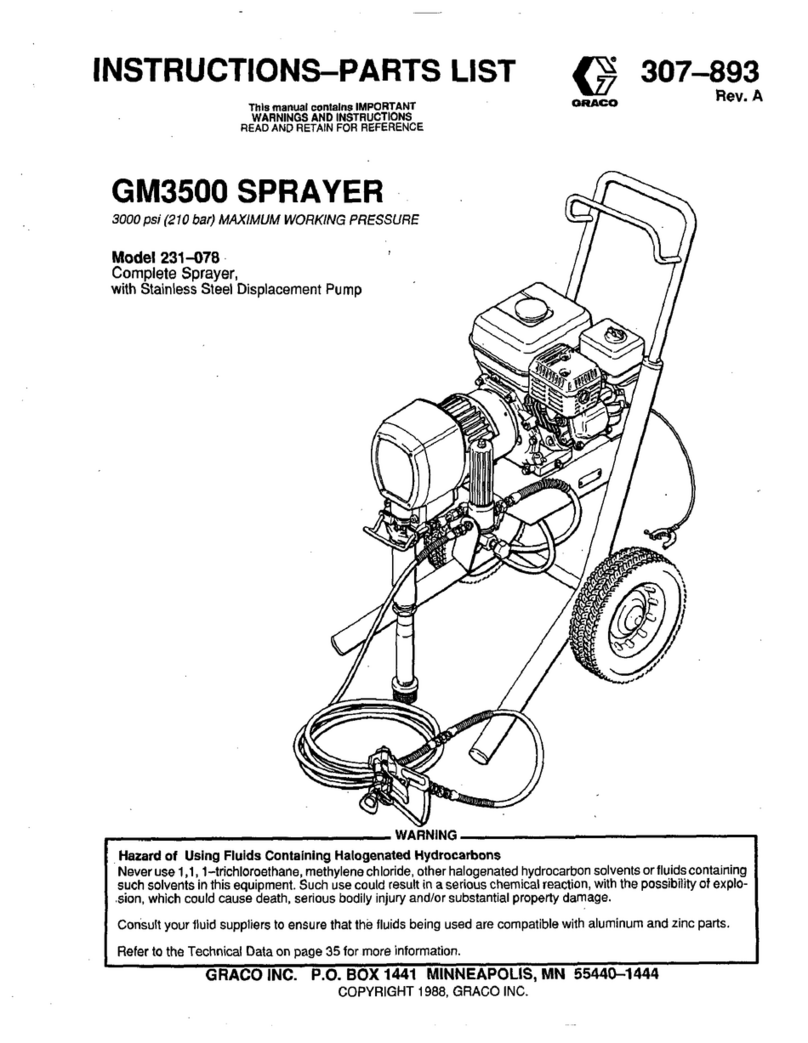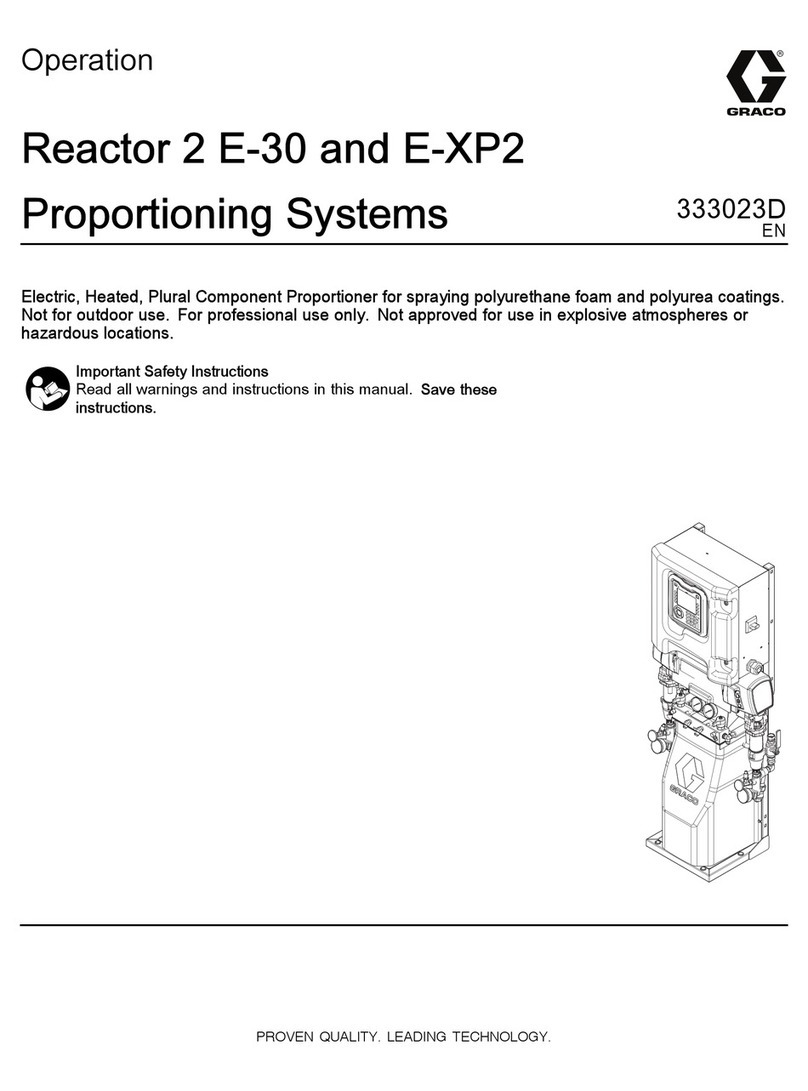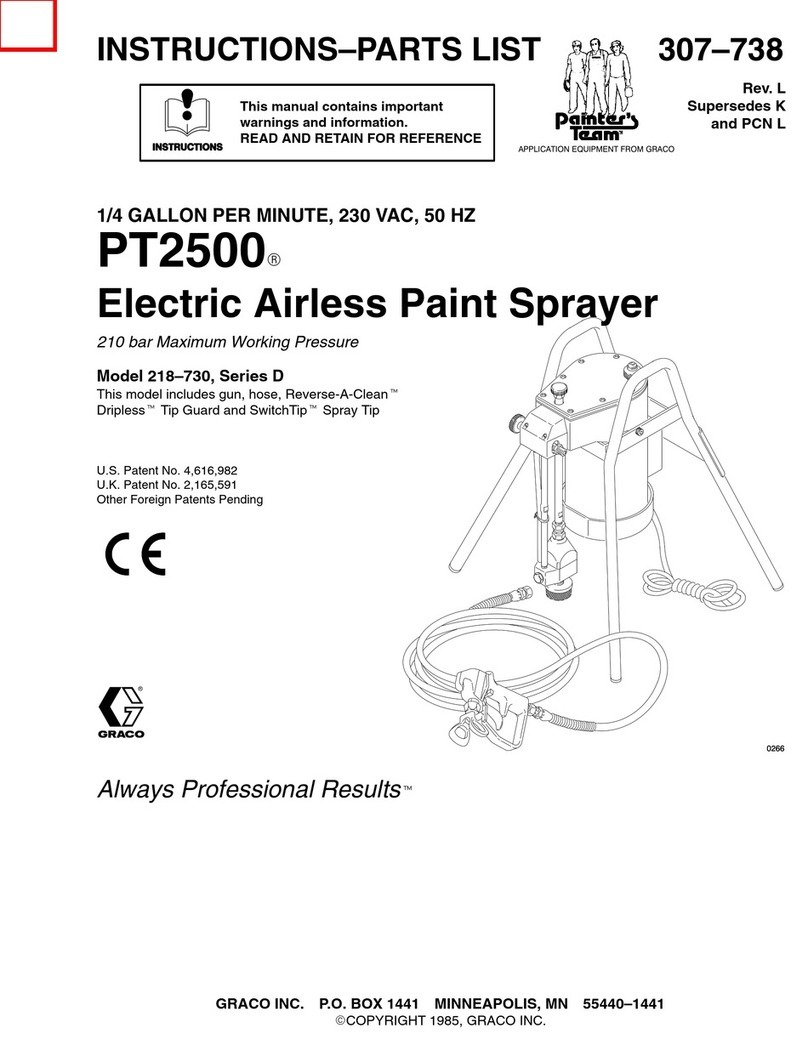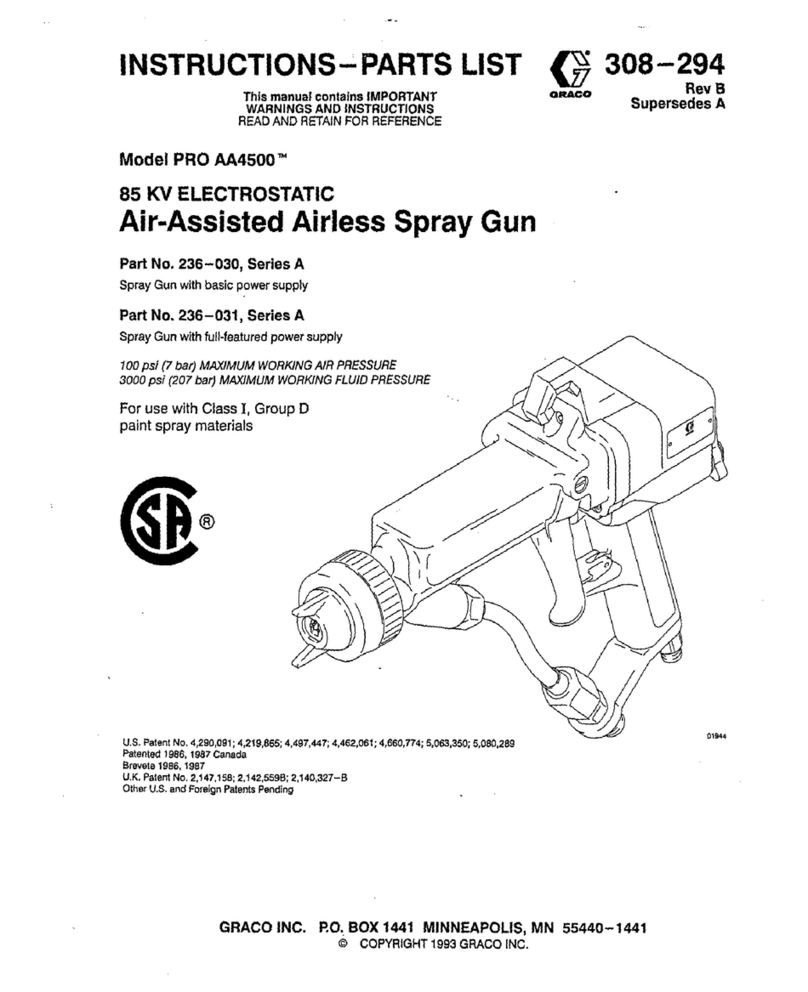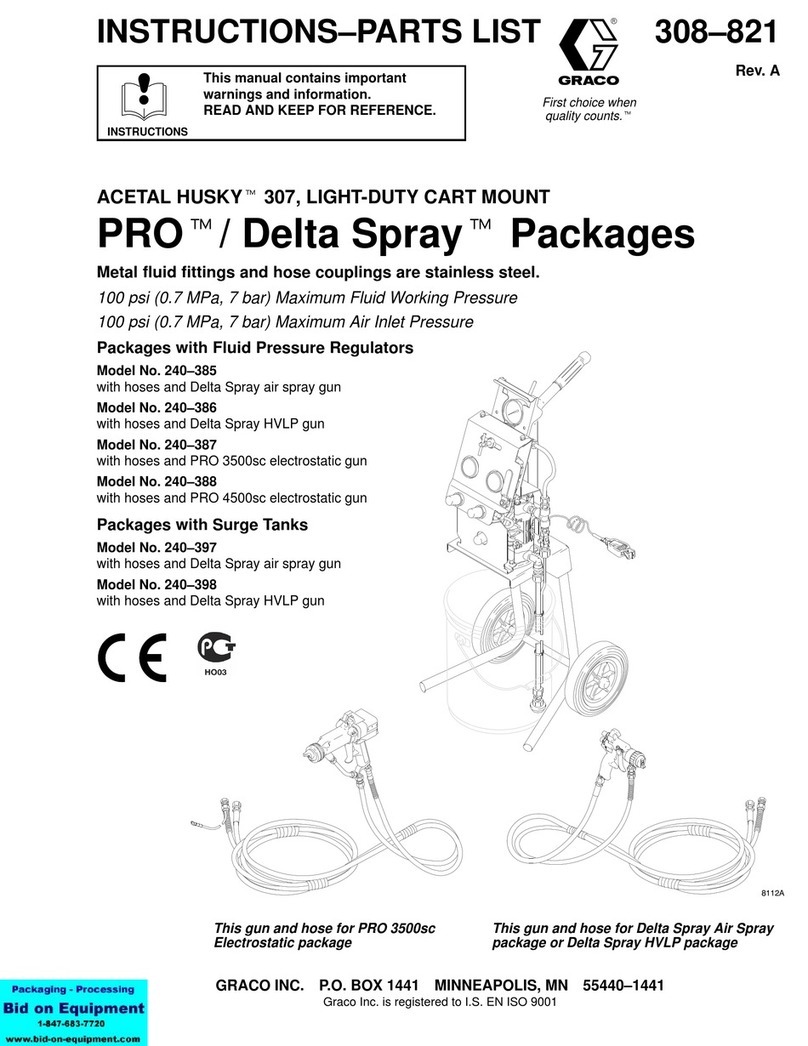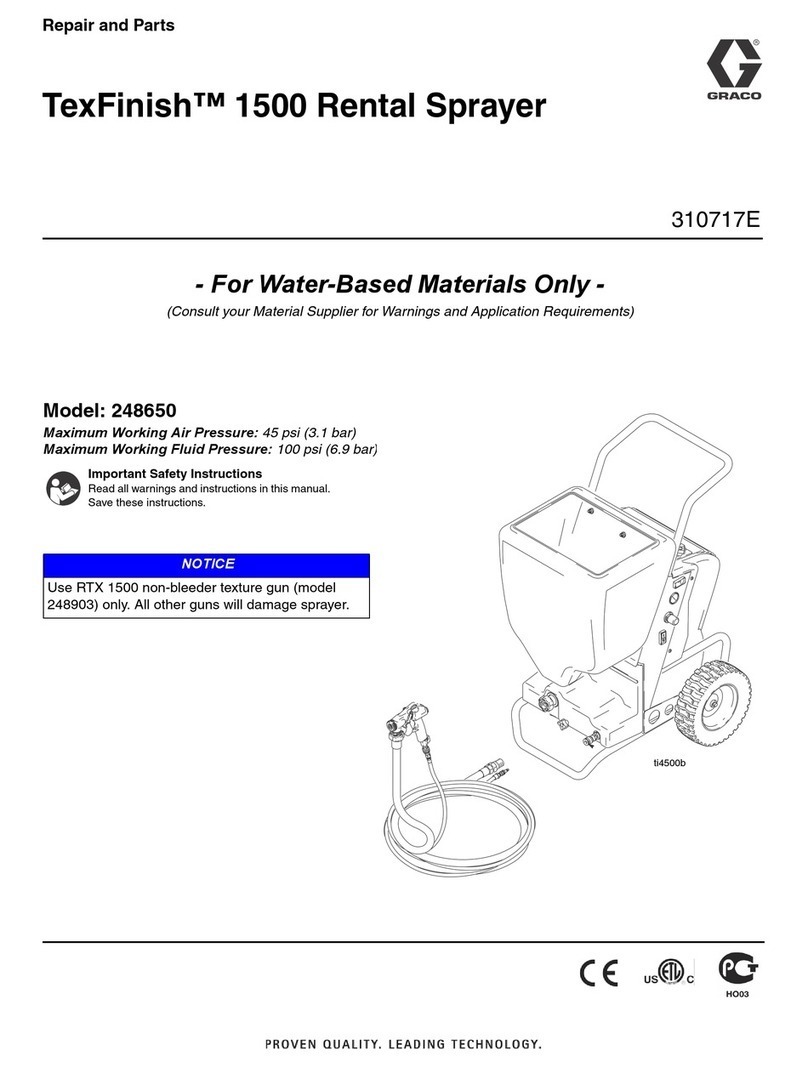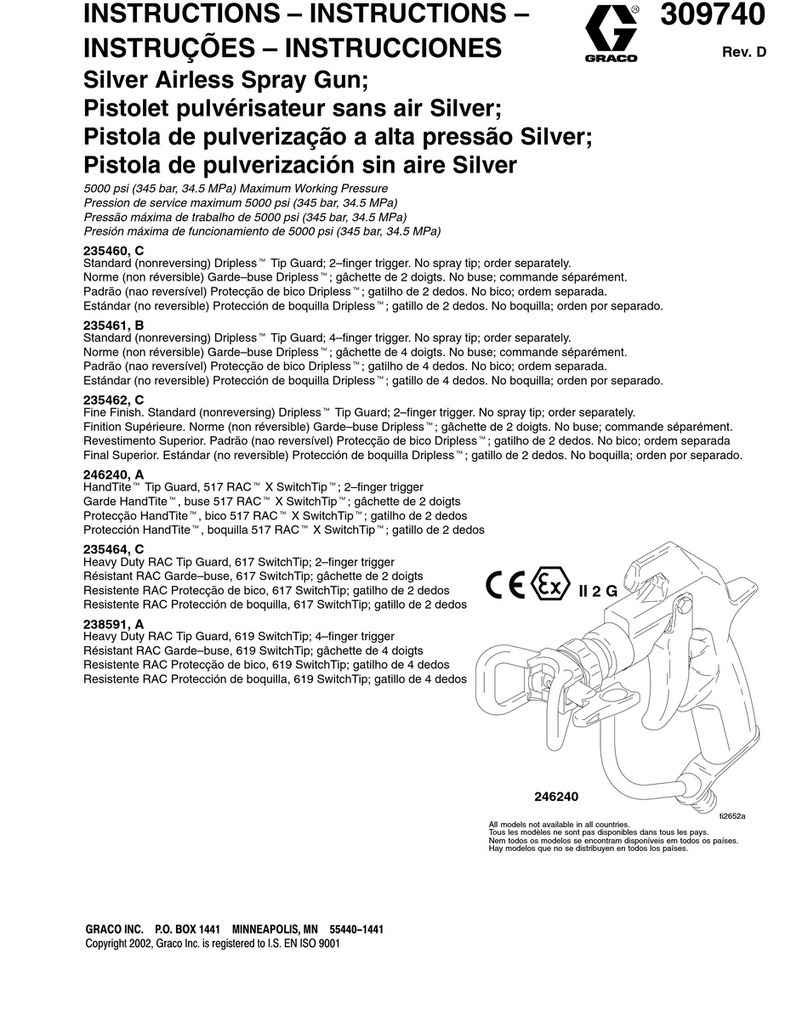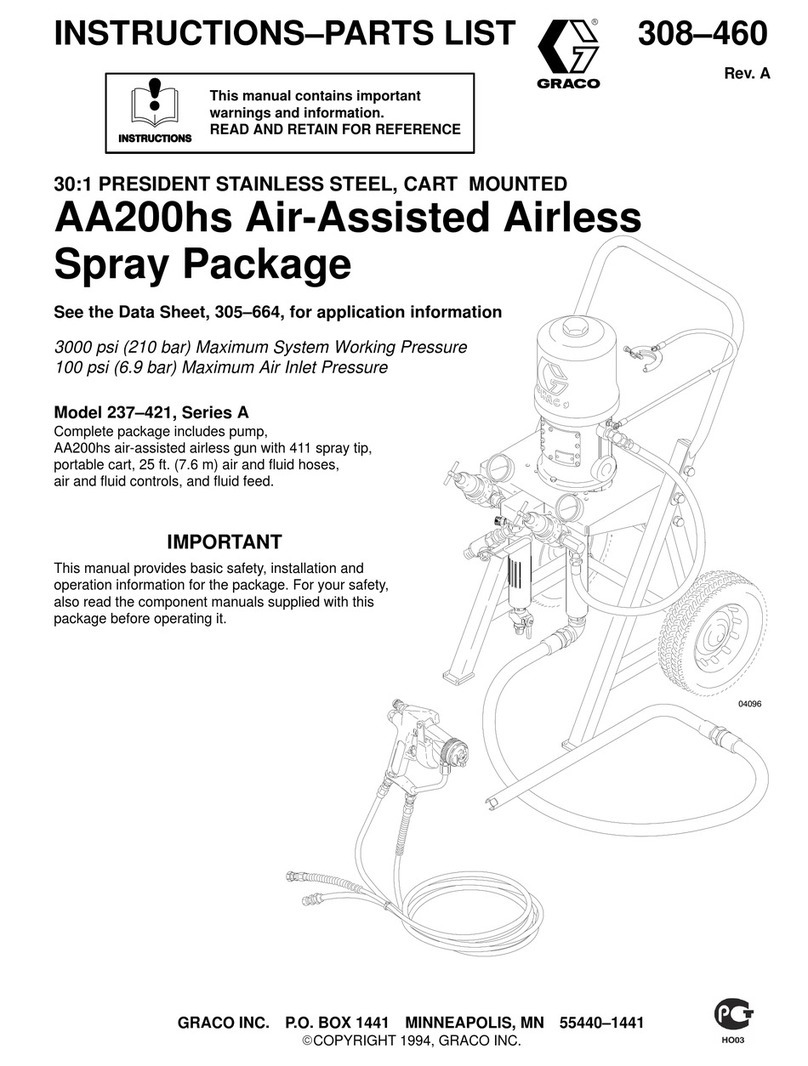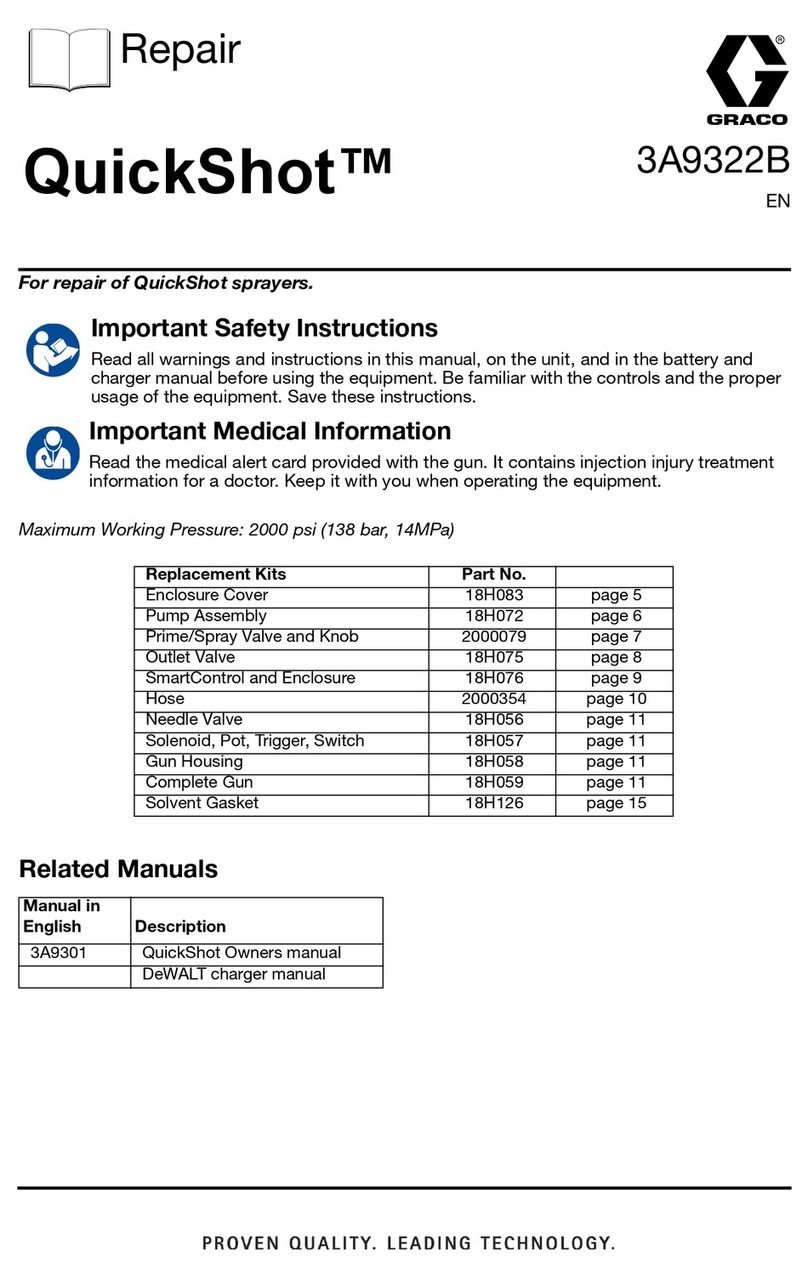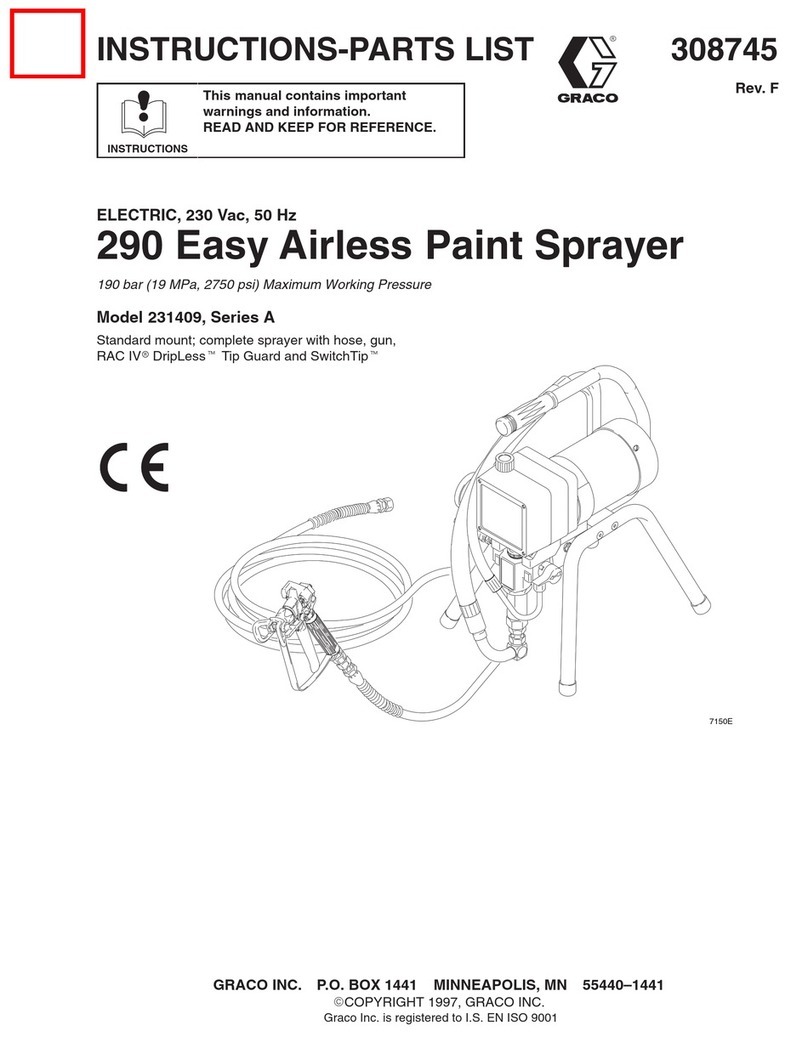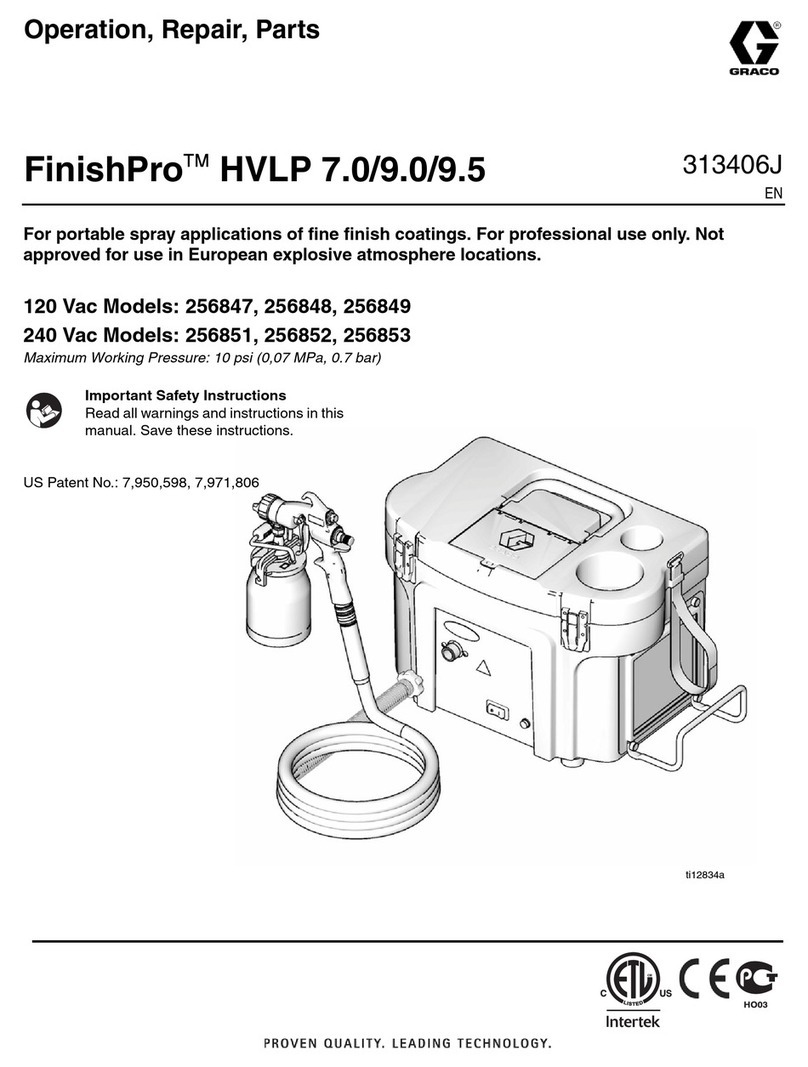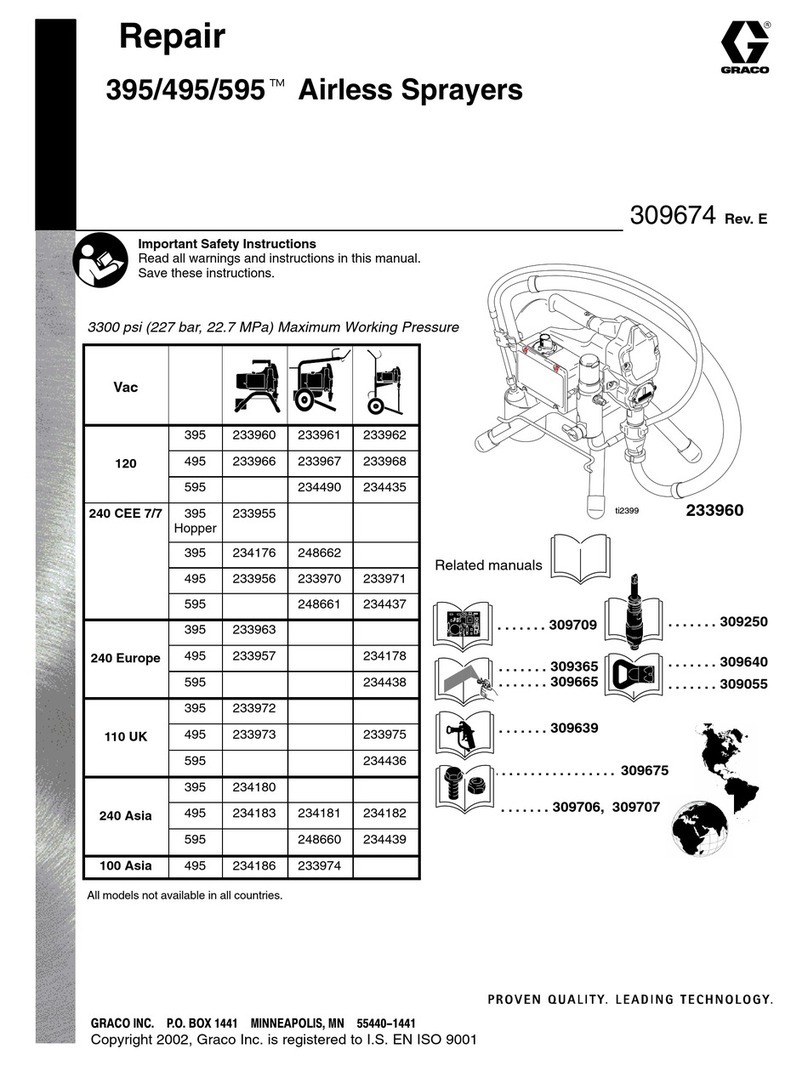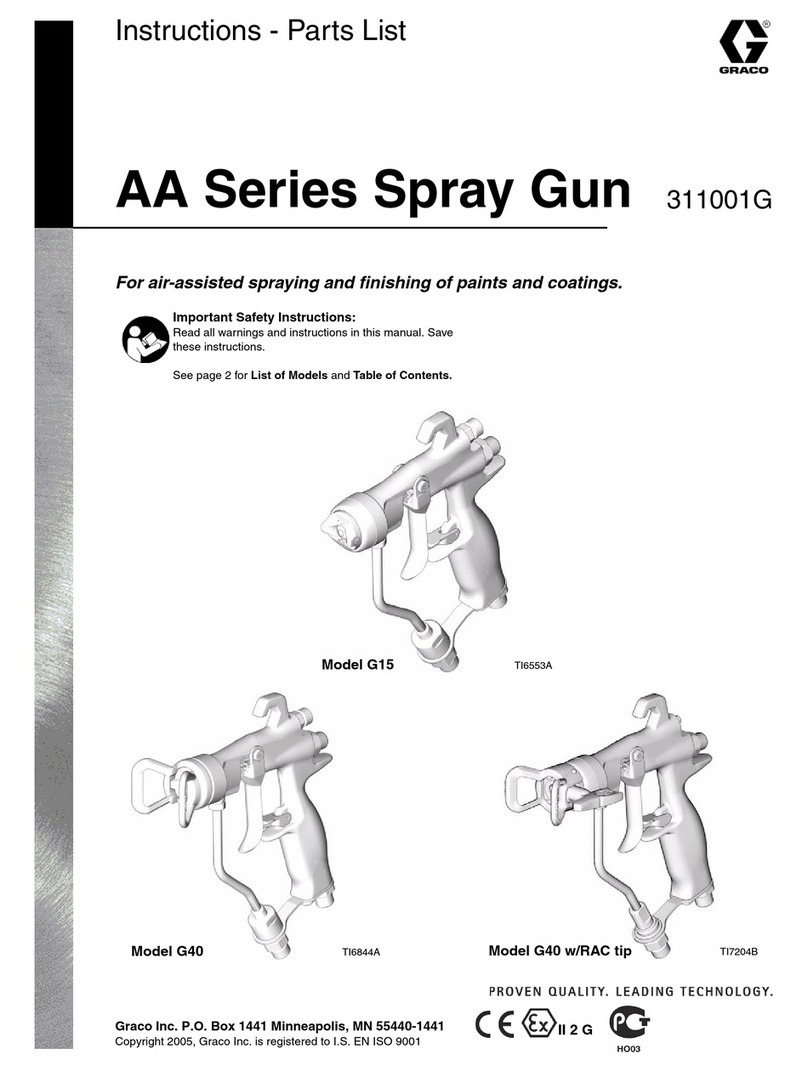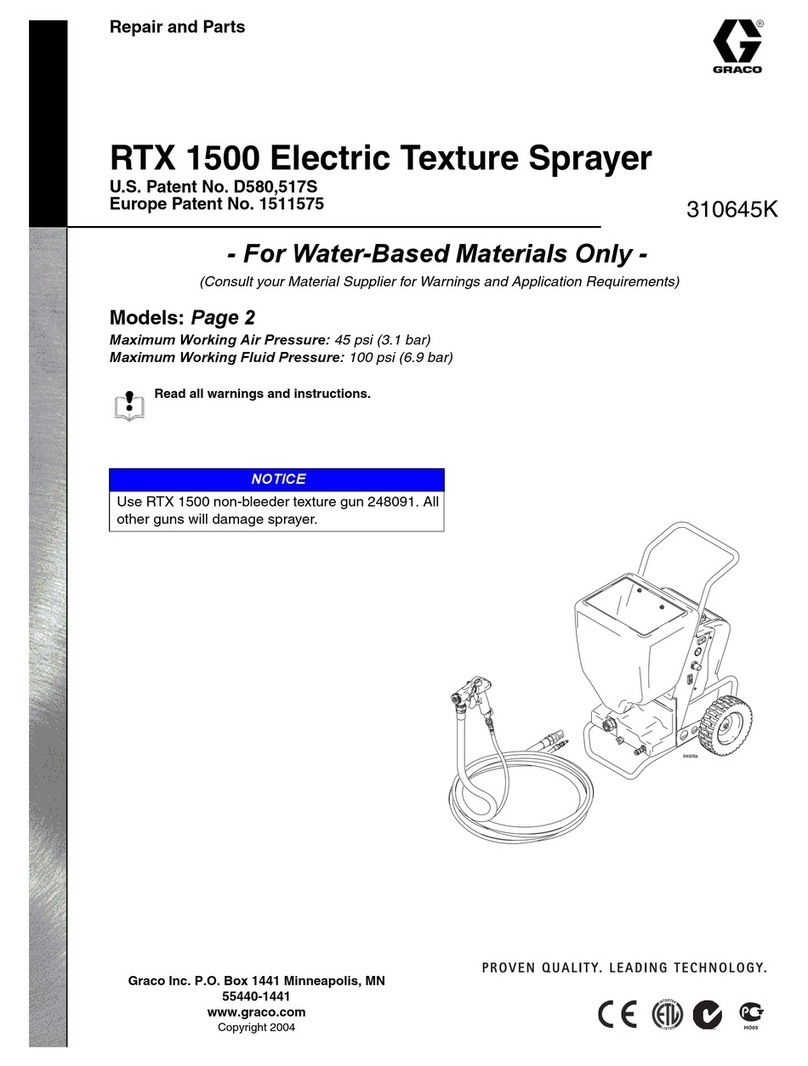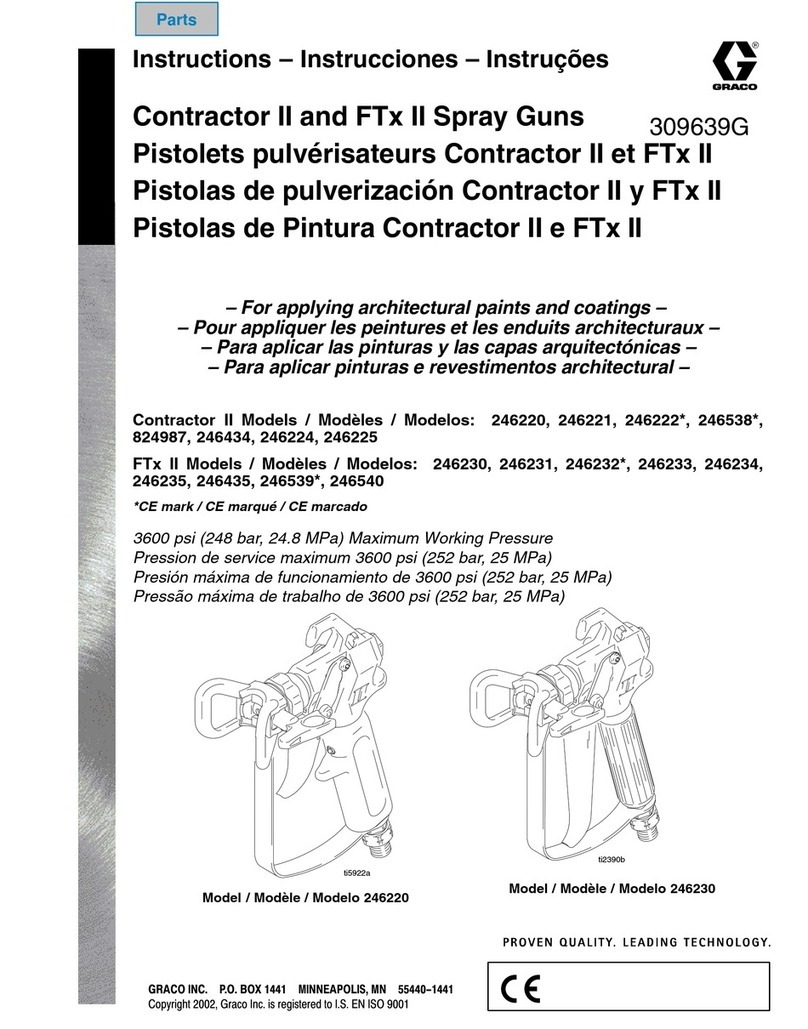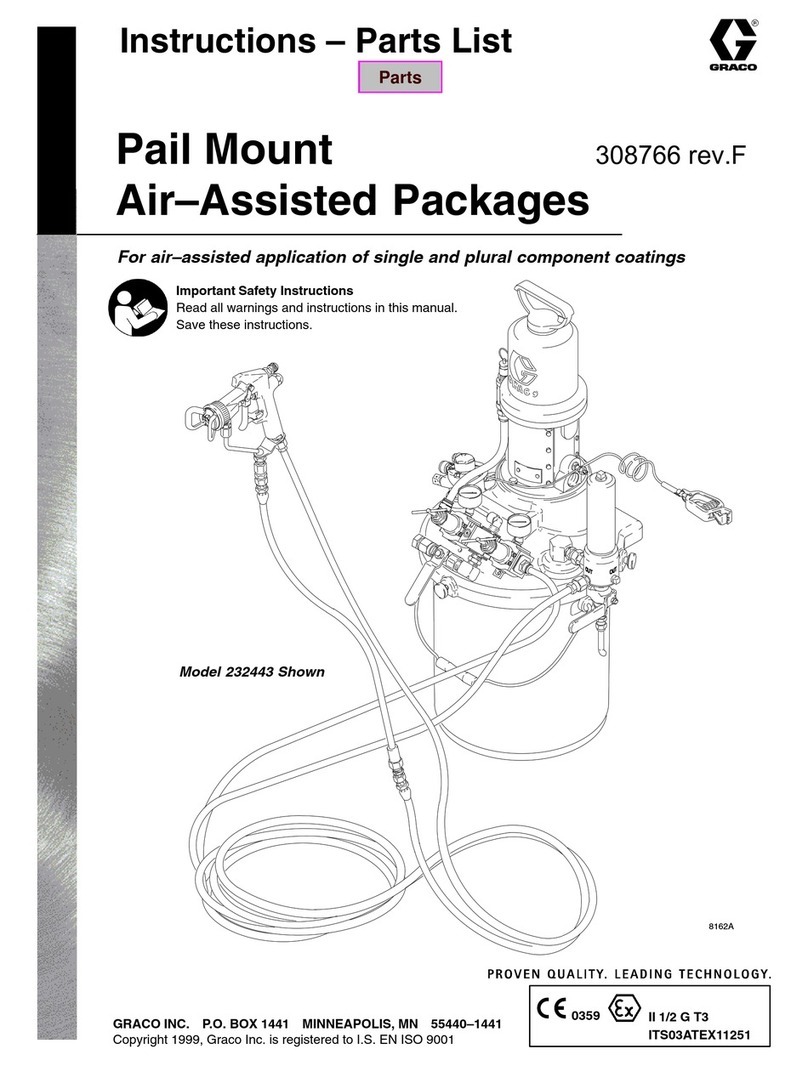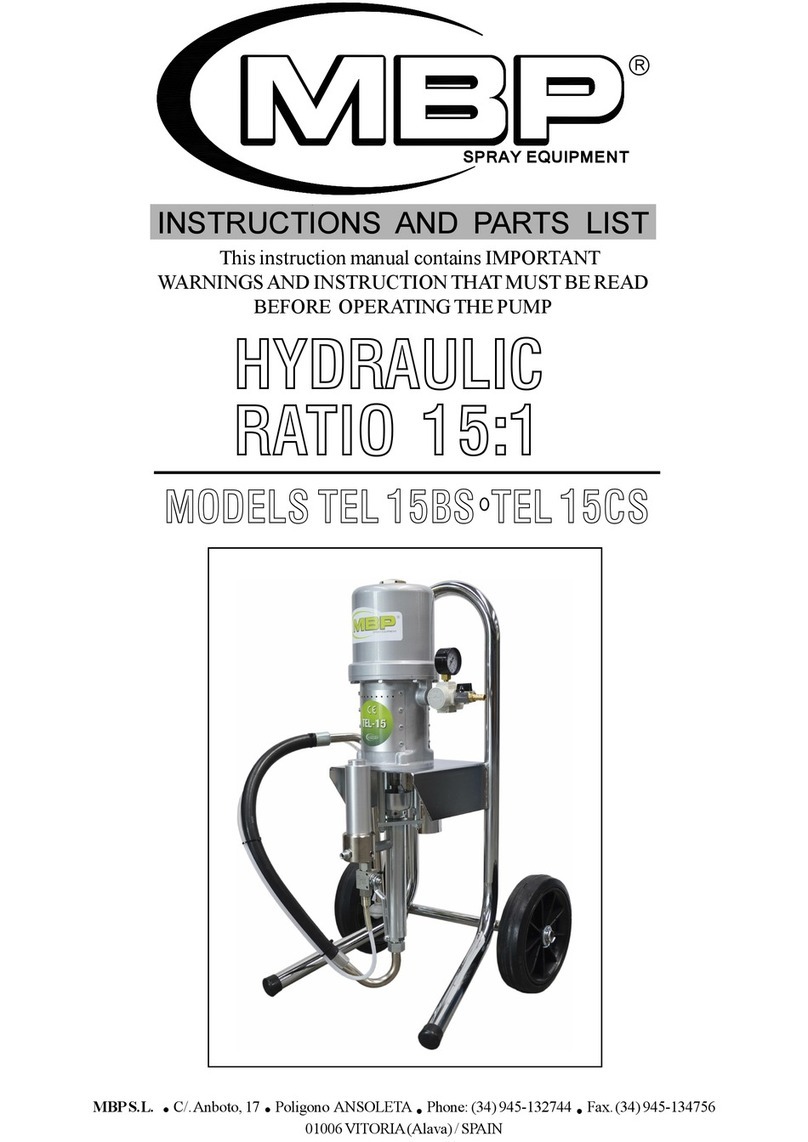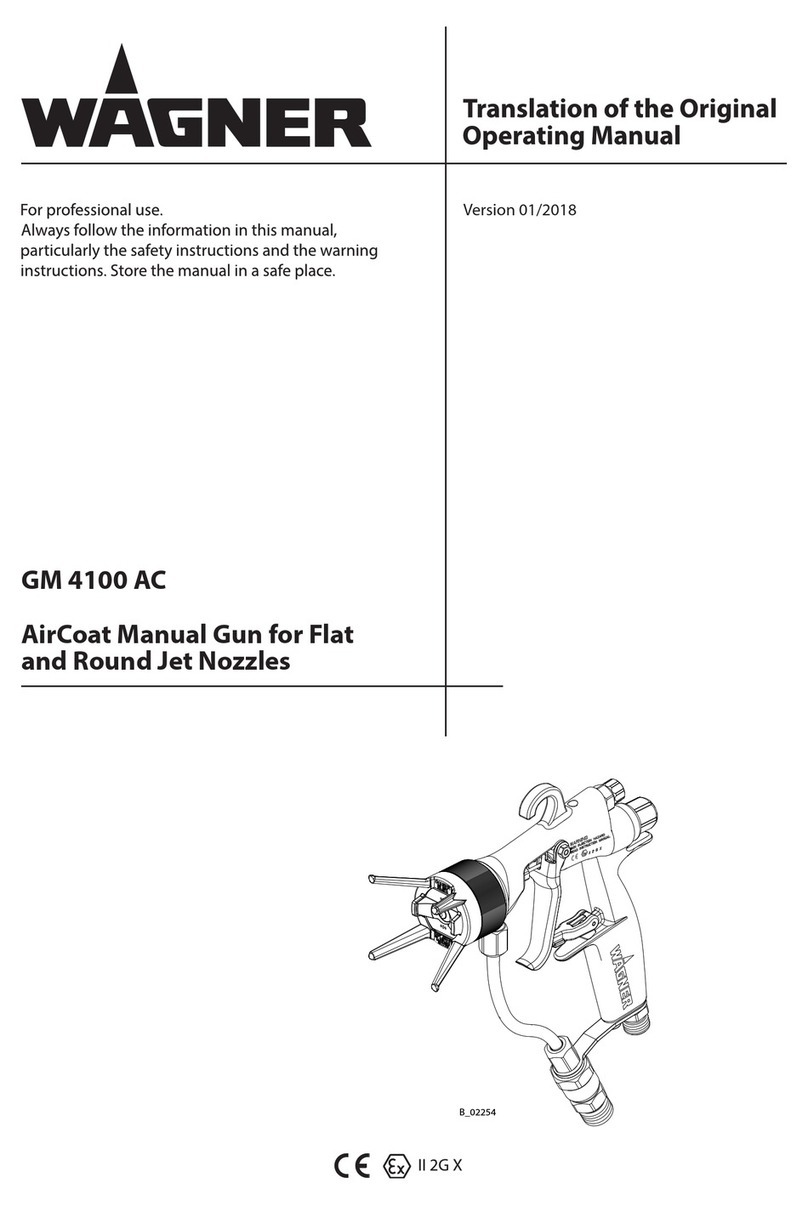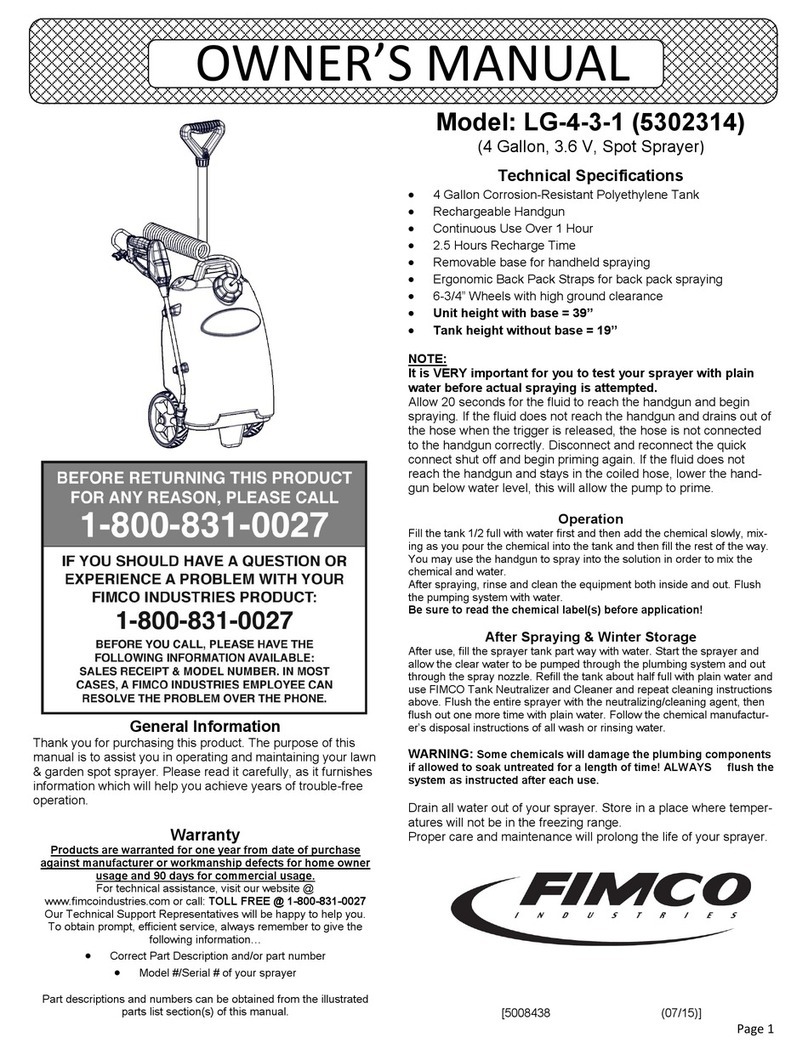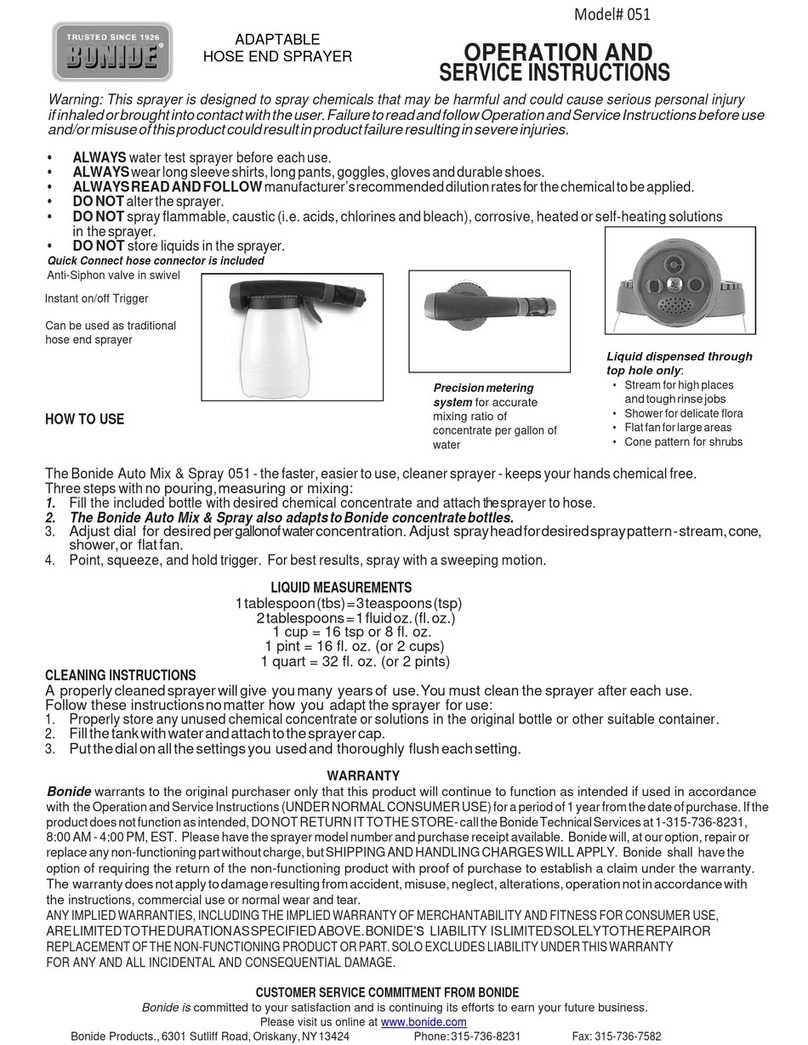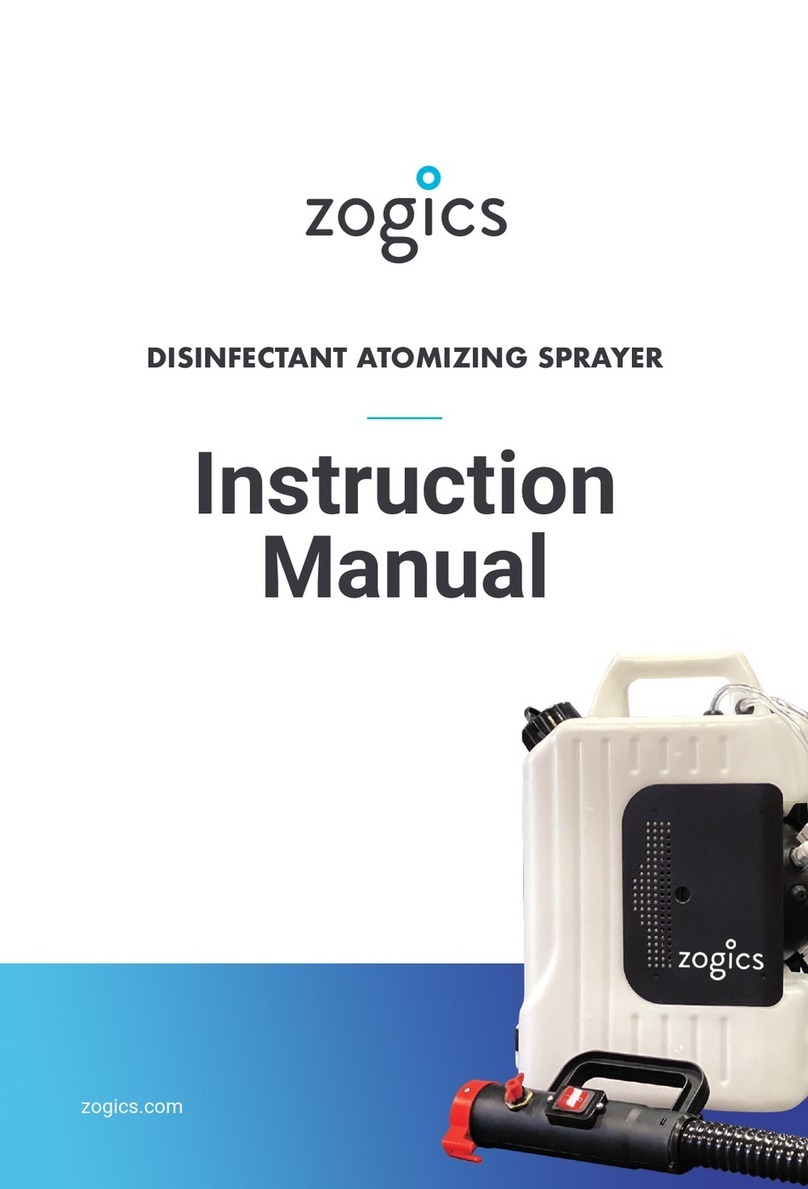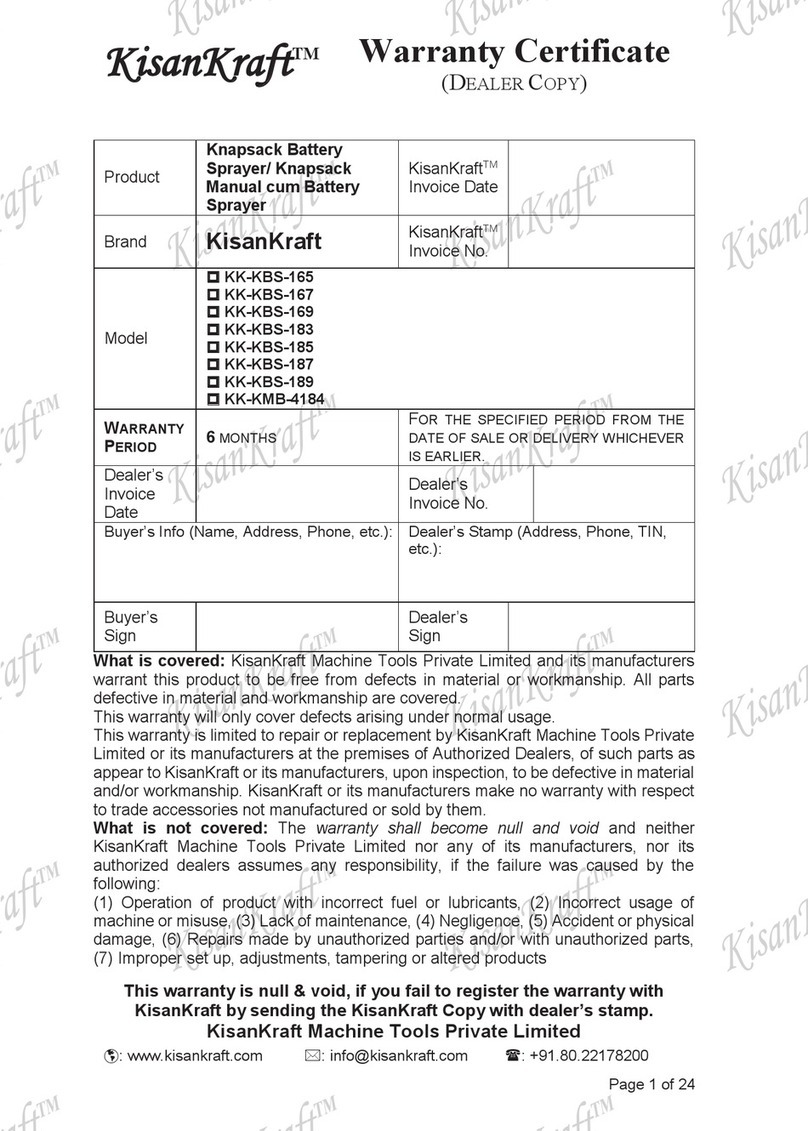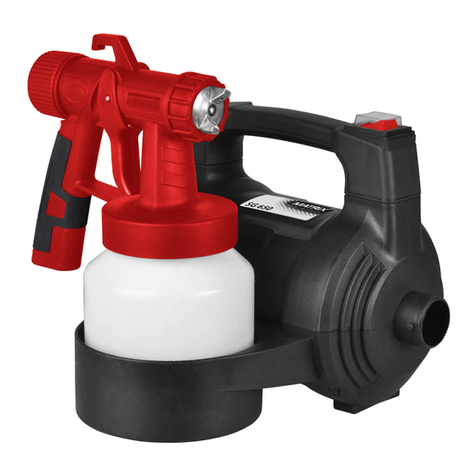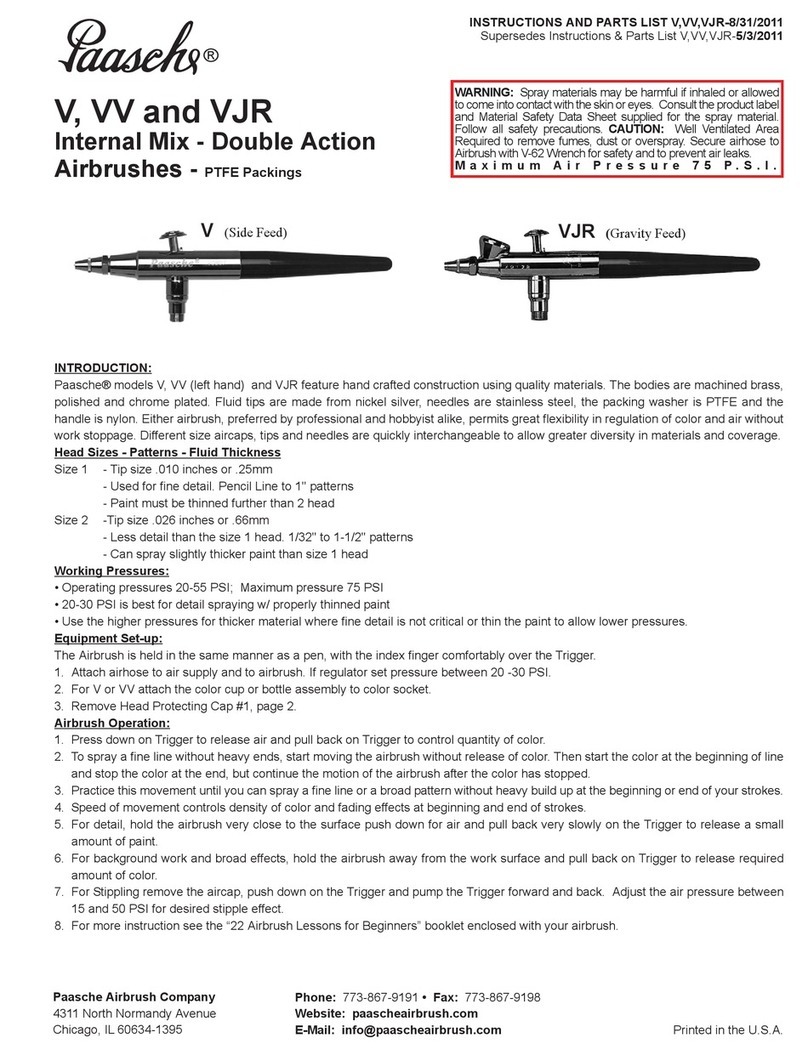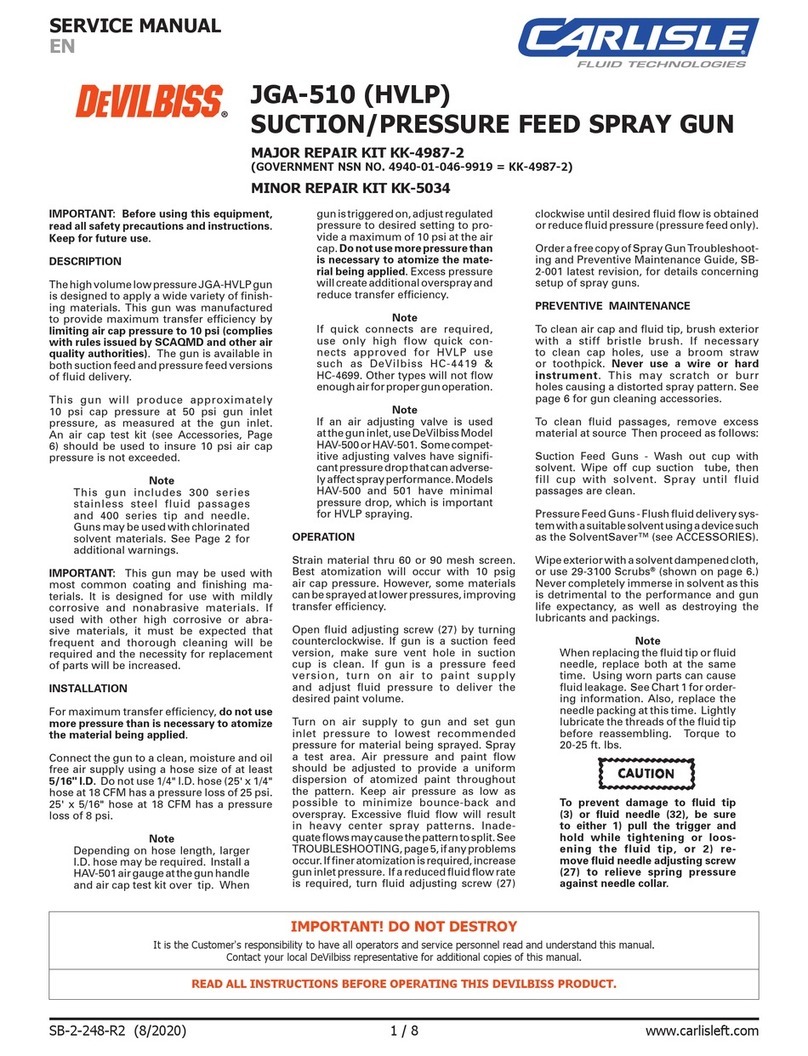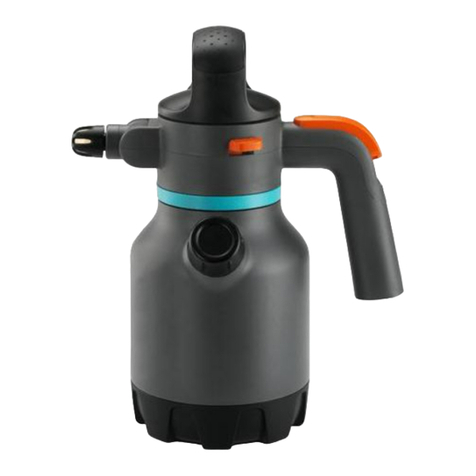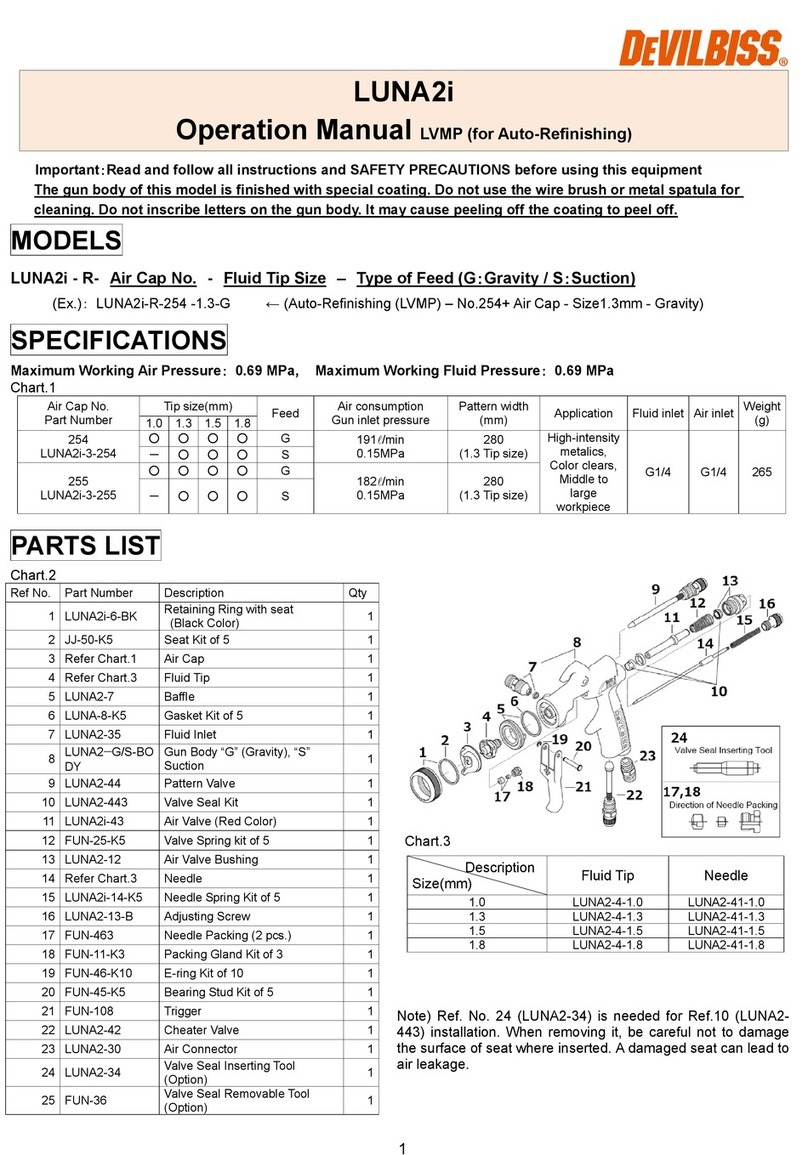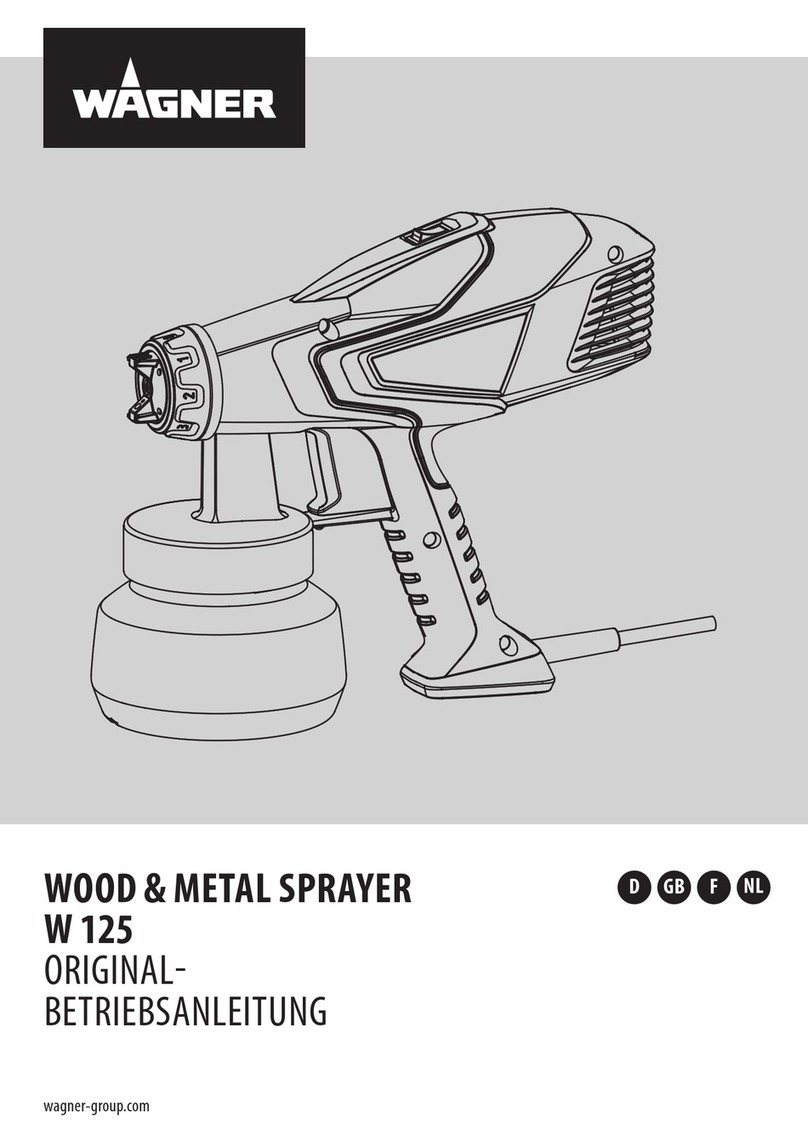
7306-863
Operation
Adjust
the Spray Pattern
WARNING
INJECTION HAZARD
T
o reduce the risk of serious injury
,
whenever you are instructed to relieve
pressure, follow the
Pressure Relief
Procedure
on page 6.
1.
Relieve pressure.
2. T
o adjust the spray pattern direction, engage the
safety latch. Loosen the tip guard retaining nut.
T
urn the spray tip so the groove is horizontal for a
horizontal spray pattern and vertical for a vertical
pattern. T
ighten the nut.
3.
The spray tip orifice size and spray angle deter
-
mines the coverage and size of pattern. When
more coverage is needed, use a larger spray tip
rather than increasing fluid pressure.
WARNING
To reduce the risk of a fluid injection injury, NEVER
use the gun with the tip guard or trigger guard
removed
CAUTION
Openings
in the tip guard are designed to reduce
paint buildup on the guard while spraying. Any
damage to the sharp edges of the openings causes
paint to collect at that area. T
o reduce the risk of
damage, never hang the gun by the tip guard.
Cleaning and Clearing the Spray T
ip
WARNING
To
reduce the risk of
serious injury from fluid injection
or
splashing, always follow the
Pressure Relief Pro
-
cedure on page 6 before cleaning and clearing the
spray
tip.
Clean off the front of the tip frequently during the day’s
operation
and at the end of the work day
. Then use a sol
-
vent
soaked brush to clean the spray tip and to keep fluid
buildup
from drying in and clogging the spray tip.
If the spray tip clogs while spraying, release the spray
gun trigger, engage the safety latch, shut off the pump,
and follow the Pressure Relief Procedure on page 2.
Then remove the spray tip and blow out the obstruction
with
air from the front
of the spray tip, or let the spray tip
and
gun nozzle soak long enough to dissolve the obstruc
-
tion.
If the obstruction won’t dissolve, jar it out by
tapping
the
back of the spray tip against a flat surface.
When changing spray tips, take a moment to check the
tightness of the valve seat (21). It should be torqued to
190–210
in–lb (23–24 N.m). See Fig 3.
CAUTION
NEVER soak the entire gun in solvent. Prolonged
exposure to solvent can ruin the packings.
Flushing the Gun
WARNING
Before
flushing
, be sure
the entire system and flush
-
ing
pails are properly grounded. Refer to
Grounding
on page 5. Follow the Pressure Relief Procedure
on page 6, and
remove the spray tip from the gun.
Always use the lowest possible fluid pressure, and
maintain firm metal-to-metal contact between the
gun
and the pail
during flushing to reduce the risk of
a
fluid injection injury
, static sparking and splashing.
See Fig 3.
Relieve pressure. Remove the spray tip. Flush the gun
and spray system with a compatible solvent. Always
flush
the gun before the fluid being sprayed can dry in it.
Fig
3
0959
MAKE
FIRM MET
AL–TO–METAL
CONT
ACT BETWEEN GUN AND
GROUNDED P
AIL DURING
FLUSHING
TORQUE TO
190–210 in–lb
(23–24 N.m)
21


